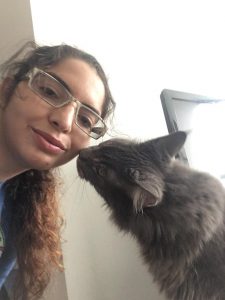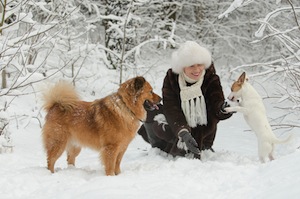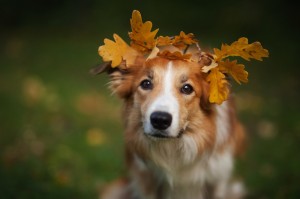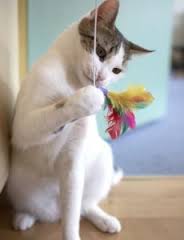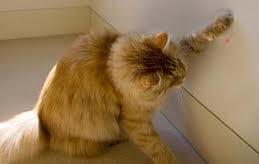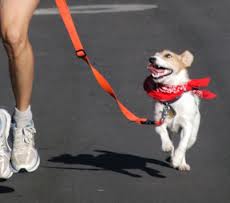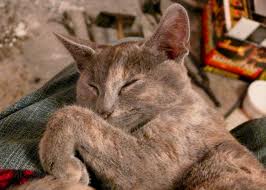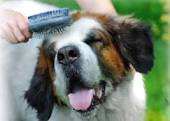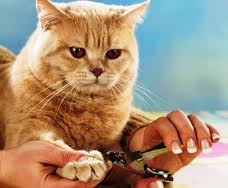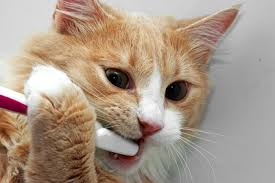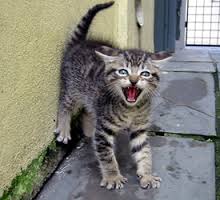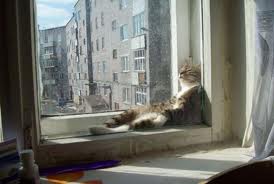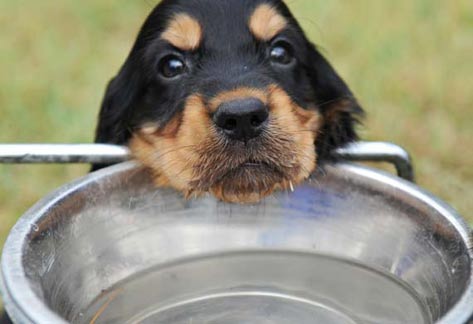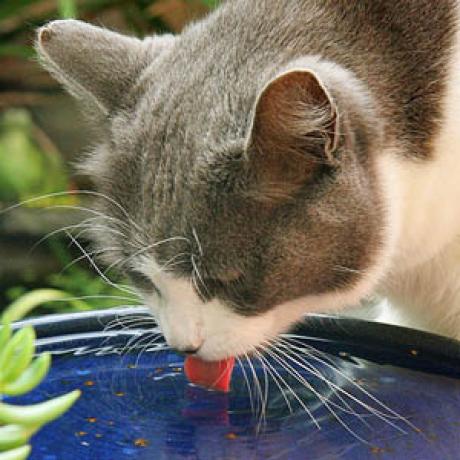Archive for the ‘Cat Care’ Category
SITTER HIGHLIGHT: EMMY!!!
Are Raw Diets Good for your Pets?
My Valentino has a very sensitive stomach, and a couple of years ago, he had chronic diarrhea for over a a year- poor thing! During that time, I tried every food (meaning all healthy kibbles), vet RX food, just about everything, and nothing worked until I found raw. At first, I’ll admit, I wasn’t a fan because its expensive, its gross and it requires more work than just dumping some kibble in his bowl. But, as anyone who knows me, knows I would do anything for my dog, so I tried it – and his chronic diarrhea went away, his itchiness went away, his coat is always shinny, and people cant believe he’ll be 7 years old because he’s in such amazing shape!
Feeding a whole, raw food diet has been associated with:
Increased energy
Healthier skin and the elimination of itchy skin conditions
Shinier fur with less shedding
Healthier teeth, gums, and better breath
Firmer muscle tone with increased strength and mobility
Healthy digestion and smaller, firmer stools
Stronger immune system
Better weight management
Raw food is also believed to help mitigate and prevent:
Cancer
Diabetes
Kidney and liver disease
Heart disease
Pancreatic disease
Autoimmune disease
Cats and dogs are natural carnivores. They have long, sharp teeth designed for meat eating, and their digestive tract is much shorter and secretes enzymes that enable them to safely consume raw meat. Their stomach acids are so much stronger than ours that they tend to kill off almost all pathogenic bacteria anyway. Raw food is high in protein and the natural nutrients that your pet needs.
Most processed kibble and canned pet foods are the equivalent of junk food for your pet. The intensive manufacturing processes create an inferior and biologically inappropriate product that is low in nutritional value and lacks vital food enzymes. Feeding these foods can lead to a negative effect on our pet’s health. Raw, whole ingredients will support and optimize a healthy immune system and wellness.
If you do the switch, don’t be alarmed when your dog poops a lot less, and it’s much smaller in size- this is supposed to happen because the food he is eating is high quality and its being used instead of excreted.
Why not give it a try! There’s plenty of brands out there to make it easier than figuring it out on your own, and in the long run, you will save money on your pet’s medical bills, good luck!
BEWARE: High Rise Syndrome
When summer comes around, many pet parents eagerly open windows to enjoy the weather. Unfortunately, they are also unknowingly putting their pets at risk. Unscreened or unsecured windows pose a real danger to cats (and some dogs too!), which fall out of them so often that the veterinary profession has a name for the complaint: high-rise syndrome.
FACTS:
(1) Cats have excellent survival instincts, and most cats fall accidentally from windows etc.
(2) Cats have an incredible ability to focus their attention on whatever interested them- like a bird etc- which can cause distraction, and may loose their balance and fall.
(3) Because cats have little fear of heights, pet owners assume they can take care of themselves. But just because cats have claws and can cling to some things, they cant cling to all things, such as concrete, brick or window ledges.
(4) When cats fall from higher places, they don’t land squarely on their feet, instead they can land splayed apart, which can cause head and pelvis injuries.
(5) Its a misconception that cat’s wont be injured if they fall from one or two story buildings, because these short distances may not give them enough time to adjust their body posture.
PREVENT HIGH RISE SYNDROME:
(1) Install snug and sturdy screens in all windows.
(2) If windows have adjustable screens, make sure they are tightly wedged into window frames.
(3) Note that cats can slip though childproof window guards. These don’t provide adequate protection!
Getting a Kitten? Read these Nutrition Tips!
 Kitten’s nutritional needs differ greatly from an adult cat’s requirements. After all, that little ball of fluff may double her weight during the first few weeks in her new home. And your new little kitten, will need extra energy for playtime!! Also, don’t forget to get your new kitten to the vet as soon as you can for his or her’s first check up!
Kitten’s nutritional needs differ greatly from an adult cat’s requirements. After all, that little ball of fluff may double her weight during the first few weeks in her new home. And your new little kitten, will need extra energy for playtime!! Also, don’t forget to get your new kitten to the vet as soon as you can for his or her’s first check up!
WHAT KITTENS NEED
All cats, kittens included, have similar needs for fat, most vitamins and some fatty acids. But when it comes to protein, a growing kitten needs more that an adult cat, along with more minerals, amino acids, and some essential vitamins. Thirty percent of a kitten’s energy source should come from the protein source in his or her food. Your vet may have recommendations for a nutritious kitten food. Also this is a great website for information on nutrition- http://bestcatfoodadvisor.net/.
NOT JUST ONCE A DAY
You know how active kittens are, so you have to make arrangements for your kitten to eat 3 to 4 meals a day. One meal a day cannot supply a full day’s energy store for a kitten, with all the playing, racing, chasing, pouncing and stalking that takes place!
Don’t forget unlimited access to clean, fresh water 24/7. The water bowl needs to be checked frequently, as bowls can tip. Just because there was water in the morning, doesn’t mean there will be water left in the afternoon!
Battle Cabin Fever!
Pets can get the winter blues too! Even if you live in a warmer state, the change of season affects pets too! Pet owners who ignore their pet’s needs for winter stimulation will find their companions gaining weight, becoming irritable, and sleeping too much. However, here are some steps that will make you and your pet happier during the long colder months!
(1) Brighten the Lights: Pets respond to illumination like we do- they get peppier when the lights are brighter !
(2) Encourage Play Time: Just because its cold outside, doesn’t mean you can’t have some indoor stimulation! Put your timer on, and play with your pet for that whole time period.
(3) Recalculate Food Quantities: If a dog or cat is not outdoors as much, you may want to lower their food intake, so they don’t gain winter weight!
(4) Enhance Scents Around the House: Scented goodies can keep dogs busy as they try to find the course of the smell. Cats like toys with catnip and/or scratching posts.
(5) Go Outside: Bundle up (and bundle up your dog too) and do get that outdoor time every day!
Fall Tips to Keep Your Pet Safe :)
Help keep your pet safe this Fall by keeping in mind these tips!
(1) Dogs can get the flu too! If you see a dog coughing, keep your dog away. Before going into a dog park, check out all the dogs first, to see if you notice any symptoms of a sick dog. If your dog does develop a cough, contact your vet!
(2) Holiday stress can affect your pets too! Lots of unfamiliar faces and loud talking can stress your pet out. Exercise your dog beforehand and give him a special chew toy to keep him distracted. If he still seems stressed, put him in a quiet room away from all of the commotion. Be sure cats have access to a quiet room where they will probably hide all on their own 🙂 For other small caged pets, transfer their cage to a quiet area too. If you are getting ready for a trip, try to remain calm and keep your anxiety down (your pets can sense your stress). Also, try to pack where your pet cannot see the suitcase, some pets get stressed out as soon as they see you packing!
(3) Keep pests out! As the weather gets colder, rats and mice may decide that your house would be a great place to stay warm and dry. Be mindful of how you prevent these pests from entering your house. To keep them out, close up any entry holes and choose anti-rodent products that are non-toxic. Rodenticides are extremely toxic to dogs and cats and other small pets, so it is best to discuss a safe control plan with a professional exterminator and your vet.
(4) Keep school supplies like markers, pencils, glue sticks away from your pets and off the floor- they can be toxic if ingested!
(5) Snakes can get grumpy as they are preparing to hibernate and don’t take kindly to being disturbed by curious pets. To protect your pets from venomous snake bites, know which snakes are poisonous and where they usually hibernate. Walk your dog on a leash away from those areas.
(6) Mushrooms that pop up in your field can make your pet sick if they eat them. A few of the mushrooms are actually deadly, so if you know your pet has eaten one go to your vet ASAP.
(7) Just like people, your pets can have seasonal allergies too! Symptons are sneezing, itchy skin, ear infections and watery eyes. Call your vet if you think your pet has allergies to discuss testing and a treatment plan.
(8) Car coolants are highly toxic to pets. Clean up any spills immediately, keep any coolant out of reach of pets, and dispose of used coolant. You can also switch to a propylene glycolic-based coolant- while it isn’t completely non-toxic, it is significantly less toxic than the other engine coolants.
HAPPY FALL!!
What To Avoid In Your Pet’s Food
Be an advocate for your pets! Don’t just buy pet food and/or treats because it’s convenient- most pet foods and treats sold at the grocery store can contain some harmful ingredients. Support your local specialized pet stores! (Most of them in the Hoboken/JC area will deliver too!)
Of course, foods that are healthier for your pets, will be more expensive, just like with humans, but it should lead to a longer, healthier life for your pet, and hopefully lower your vet bills!
Here’s what to AVOID:
- BHA, BHT ethoxyquin, propylene glycol, and sodium selenite (these are dangerous chemicals)
- Meat, Meat-Meal, and Meat-By-Products (these are unspecified protein sources)
- Corn, Whey, Soy and Beat Pulp (unhealthy grains and fibers- def. great to avoid if your pet needs to shed some pounds too!)
- Products from China and Rendering Plants (poorly regulated)
Take 2 minutes of your day today, to check the ingredient labels on all your pet food/treat products, and make sure none of the above are present. If so, switch your pet to a better food, but make sure to do it gradually, or else your dog may get an upset stomach.
You should also talk to your vet about your pet food choices, but make sure they are not just pushing the food they sell.
And lastly, of course if your pet is on a special/medicated diet, please talk to your vet if you would like to switch foods.
Get A Real Pet Sitter!! Don’t be Tricked by a So-Called Pet Sitter.
With more than 60 percent of households owning a least one pet, finding reliable pet care is likely a concern for the majority of pet owners. For these pet owners, we have an important piece of advice: Don’t be tricked by so-called pet sitters.
Many pet owners, and even news outlets, use the term ‘pet sitter’ incorrectly, referring to anyone—from a family friend to the neighborhood teenager asked to walk a dog—as a ‘pet sitter. It is important that pet owners understand that pet sitting is a professional career and professional pet sitters offer peace of mind that other pet-care options cannot.
Even for pet owners committed to using professional pet sitters instead of friends or family, the search can be confusing.
With the influx of pet-care directory sites popping up in the last couple of years and news stories touting pet sitting as an easy way to earn extra cash, more and more people are deciding to cash in on the growing need for pet care.
Whiskers and Leo has offered pet-sitting services since 2008 and is a member of Pet Sitters International (PSI), the world’s leading educational association for professional pet sitters. In addition, we professionally background check and train all of our sitters, and of course we are insured and bonded with the proper insurance, and I have passed the CPPS test and obtained the Certified Professional Pet Sitter (CPPS) designation.
PSI President Patti Moran—who also founded the pet-sitting industry more than two decades ago—offers additional advice for pet owners. “Simply being listed on an online pet-sitter listing—or even on a nationally-publicized directory—does not make a pet sitter a professional, qualified care provider,” explains Moran. “Anyone can post a profile advertising pet-sitting services, so it’s important for pet owners to take a closer look to ensure they are hiring a real pet sitter.”
Whiskers and Leo advises pet owners to ask these important questions when interviewing a potential pet sitter:
- Is the pet sitter insured and bonded?
- Can the pet sitter provide proof of clear criminal history?
- Does the pet sitter provide client references?
- Will the pet sitter use a pet-sitting services agreement or contract?
- Is the pet sitter a Certified Professional Pet Sitter (CPPS) and/or has he or she participated in pet-care training, such as pet first aid?
- Is the pet sitter a member of a professional and educational association, such as Pet Sitters International?
- Does the pet sitter have proper backups in place, in case of an emergency?
- Does the pet sitter use a professional scheduling tool, and/or a GPS check in/out service for extra peace of mind?
Autumn Safety Tips
I love the fall!! There isnothing like crisp, cool air, the first months of school and luscious foliage to get you excited for the changing seasons. Your pet, too, is probably welcoming the break from hot, sticky weather. But pet parents, beware—fall is also a time of lurking dangers for our furry friends. Here are some things to look out for!
(1) The use of rodenticides increases in the fall as rodents seek shelter from the cooler temperatures by attempting to move indoors. Rodenticides are highly toxic to pets—if ingested, the results could be fatal. If you must use these products, do so with extreme caution and put them in places inaccessible to your pets.
(2) It’s back-to-school time, and those of you with young children know that means stocking up on fun items like glue sticks, pencils and magic markers. These items are considered “low toxicity” to pets, which means they’re unlikely to cause serious problems unless large amounts are ingested. However, since gastrointestinal upset and blockages certainly are possible, be sure your children keep their school supplies out of paw’s reach.
(3) Fall and spring and are mushroom seasons. While 99% of mushrooms have little or no toxicity, the 1% that are highly toxic can cause life-threatening problems in pets. Unfortunately, most of the highly toxic mushrooms are difficult to distinguish from the nontoxic ones, so the best way to keep pets from ingesting poisonous mushrooms is to keep them away from areas where any mushrooms are growing. Contact your veterinarian or the ASPCA Animal Poison Control Center immediately if you witness your pet eating a wild mushroom.
(4) In order to generate body heat, pets who exercise heavily outdoors, or who live outdoors, should be given more food during colder seasons. Make sure horses and other outdoor animals have access to clean, fresh water that is not frozen.
(5) Many people choose fall as the time to change their car’s engine coolant. Ethylene glycol-based coolants are highly toxic, so spills should be cleaned up immediately. Consider switching to propylene glycol-based coolants—though they aren’t completely nontoxic, they are much less toxic than other engine coolants.
(from the ASPCA.org)
Are You Feeding Your Dog Something Potentially Deadly?
Watching Dr. Oz recently, reminded me of this additive/chemical in our pet’s food (and in our food!) that has been linked to certain types of tumors in laboratory animals, according to the National Institute of Health.
The evil culprit is BHA (and also BTA).
Despite findings that this chemical may be linked to cancer, the FDA still permits its use as a fat preserver in food, and generally recognizes it as safe in low doses; however, who knows what “low doses” means and why even take the chance??? Moreover, we tend to feed our dogs the same food (and treats) day after day (unlike our own diets), so the accumulative exposure is worrisome.
There are a ton of other dog food and treats (and cat food/treats) that don’t use these additives in their products. Natural preservatives are considered safer, so most dog food companies avoid the use of these chemicals.
So 2 lessons learned here!
(1) READ your pet food labels, and ingredients list!
(2) When you read on a pet food label a particular fat ingredient has been “preserved with BHA” you know to stay away!
SAME GOES FOR CATS!!
Best Games for Cats!
Your cat is playful, curious and a hunter, and he wants to interact with you to show off his natural skills. Playing games with your cat is a great way to entertain him, as well as give him some extra exercise.
Cats love to chase and hunt, so it’s natural from him to want to exhibit these behaviors for you. Many cats, if given the chance to go outdoors, will actively hunt for birds and other small animals.
These hunting and chasing skills can be replicated in games that you play with your cat. Many cat toys that you’ll find in the store focus on the game of the hunt, and allow you to play along with your cat- like a feather, or a little mouse hanging from a string, or a ball that circles around a container – and most of the time just a box and a little catnip mouse keeps my cats happy and occupied.
Another great option for a game to play with your cat involves a laser. Your cat will be transfixed by the red laser light and try to catch it. This game can keep your cat occupied for a while and also provides exercise.
Also, playing on your bed, with your hand under the covers (to protect yourself) moving it back and forth, will entice your cat as well, and bring out the inner hunter or huntress!
If your cat loves treats, you can purchase toys that you can hide treats in, too.
It is very important to keep your cat engaged in games that are both enjoyable and a good source of exercise. Your cat will make it known if he is bored, and walk away from you or the toy. Your cat may be bored with one activity but another one might continue to entertain him. Mixing up the games and toys will help keep your cat happy.
Tip for Tuesday: 3/25/14- Keep your Pet Healthy!
Take 2 minutes out of your day to better your pup’s life! Go to http://www.dogfoodadvisor.com/ , enter the brand of dog food you are using into the search field, and check to make sure you are feeding your dog a top quality food!
For cats, check out this site!http://www.petsadviser.com/cat-food-advisor/
Make it Your Mission, To Get Your Pet In Top Shape This Year!
A recent survey indicates over 50 percent of America’s pet population is overweight or obese. It’s an epidemic now!
To get your pet healthy, or keep your pet healthy and at an optimal weight, food/nutrition & exercise are KEY!
FIRST STEP: DIET & THE RIGHT FOOD!
Very simply put, if your pet is overweight it is taking in (eating) more calories than it needs. Set all excuses aside … excessive weight in an otherwise healthy pet is a direct result of consuming unnecessary amounts of food. Of course, before starting down this course, consult your vet to make sure your pet doesn’t have any metabolic disorders.
When it comes to diet, feed your pet a high quality food, so he gets the nutrients he needs to keep healthy and full! It’s that easy. Don’t feed your pet the equivalent of McDonalds every day (Purina, Beneful, Alpo, Kibbles & Bits, etc) because its cheaper, and easier to purchase (at the grocery store). Spend a little more money and time, and later on down the road, your pet should have fewer medical issues, which means your wallet will suffer less too!
Let’s examine some excuses when it comes to your dog’s feeding habits. Whether your dog is a good weight or overweight, these 4 points are good to note!
DO ANY OF THESE SOUND LIKE YOU?? (cats are more of an issue, and overweight issues with cats need to be discussed with a vet)
(1) “But she hardly eats a thing.” This is probably a case where you feed your dog table food, so she is getting calories from that, and choosing not to eat her own food. Stop the people food- it’s unwanted calories!
(2) “My pup won’t keep quiet unless she gets her treats. And she won’t go to sleep at night until she gets her little dish of ice cream.” Congrats, your pet has trained you! Your pet has discovered that the more noise and fussing it produces the more likely it is to be rewarded for this behavior. The owner finally “gives in” to keep the pet quiet and the pet sees the food as a reward. In effect the owner is creating a “beggar” by rewarding his/her behavior. You need to break this habit immediately, and re-train, reward for being good and quiet.
(3) “She’s such a good dog we don’t want her to go hungry.” This dog became overweight because the owner’s signal of affection for their pet has focused on feeding. It is an understandable trait but unfortunately for the dog it can be a case of too much of a good thing. The owners’ method of showing affection should be directed more toward physical activity than feeding. Think “FETCH” and “TUG” not “FOOD”!
(4) “She just refuses to eat dog food.” In this case the dog has trained the owners to feed him/her such things as chicken, liver, ice cream, cookies, etc. This dog has been given a choice of what to eat and has chosen certain people food. The dog usually overeats because s/he isn’t getting a proper balance of nutrition, plus everything tastes so good there is a reward factor in eating. The solution is … you choose, not your pet. Leave down the dog food, and don’t worry if she doesn’t eat it right away, she won’t starve herself. A dog can go without food for 5 days before you have to worry (as long as she is in relatively good health and not diabetic).
SECOND STEP: THE RIGHT AMOUNT OF EXERCISE
Exercise is beneficial for your pets in so many ways- it helps decrease stress, improve sleeping habits, maintain or loose weight, and you know the old saying- A TIRED DOG IS A GOOD DOG!
The type and amount of exercise needed can differ greatly with breed, age and energy level of your pet. However, it is important to choose the right type of exercise for your pet with the help of a veterinarian if your pet is overweight. With their assistance you should be able to bring your pet back to their optimal weight. Arthritis, diabetes, cardiovascular problems are just some of the issues your pet will deal with if he or she is overweight. According to the Association for Pet Obesity Prevention, it may even decrease their life expectancy by up to 2.5 years. So if it is so bad as to affect our pet’s health, how are we letting it happen?
Exercise is important for all pets, overweight or not!
Whiskers and Leo does offer dog walking and dog running if you need extra help exercising your dog! As for cats, cats need daily exercise too, but more in the form of play. We do offer cat visits if your feline needs some extra attention and play!
Winter Tips for Your Kitty
With the cold temperatures, we need to make sure your kitties stay warm and safe!
1) If your cat is outdoor/indoor, make sure he or she is acclimated and doesn’t stay out too long, especially when it’s below freezing.
2) Watch for signs of frostbite- ears, tails, footpads and look for pale, glossy or white skin.
3) Cats like to curl up in warm places. Prevent potential burns and fires by protecting your cat from open fireplaces, wood stoves and space heaters. Warm engines are also a favorite place for outdoor cats, and feral cats too, so honk the horn or bang on the hood before starting the car.
4) Antifreeze has a sweet taste cats like but it’s toxic enough to cause serious illness and even death. Make sure your car isn’t leaking any fluids and keep containers safely locked away.
5) Feed your kitty a nutritionally complete food and always have water out for him or her. Nutrition and water are important because a well-nourished pet is better equipped to cope with harsh weather.
6) Give your cat a cozy place to sleep by offering some bedding in a warm place, free from drafts. You can raise your bed off the floor, too, cats love that jungle lair feeling.
7) Contact your vet immediately if you notice changes in your cat’s behavior, such as energy-level or appetite-decrease.
Get Rid of Pet Hair in Your Home!
No matter how much you clean or vacuum, there is always more hair!! Especially in the holiday season, you want to keep the hair to a minimum because you don’t want it ending up in your Thanksgiving dinner!
With 3 pets, pet hair is always a challenge, but keep these tips in mind, and you will be stressing less about hair being on all your clothes and in your casserole!
1- Brush your pet on a daily basis. This will reduce the amount of hair you find around your home! I like the furminator.
2- Make sure you pets get plenty of exercise, because healthy bodies promote healthy coats!
3- Feed your pet a good quality pet food- it will keep their coat healthy and soft and reduce shedding.
4- Don’t let your pet eat fat. Overweight pets have difficulty cleaning and grooming themselves.
5- Keep your pets out of your closets!
8 Reasons Why I’m Truly Thankful for My Pets!
November is the month we take time to express gratitude and celebrate all that we are thankful for. I am blessed and thankful to be able to make a living doing something that I’m tremendously passionate about – working with animals. Let’s all take a moment to reflect on why we opened up our hearts and homes to our pets, and what makes them so special to our lives!
I can say my life is better and I am a better person because of my animals and my love for them, and all animals in that case.
I can probably name a million things I’m grateful for when it comes to my pets, but here are just a few! I’m sure you can all relate to most if not all on this list!
(1) Every time I come in my apartment, my dog Valentino is super happy to see me, showing it by either with a tail wag, or a full face cleaning!
(2) Making the bed every morning, and playing with my cat Leo in the sheets, helps me start my day off with a smile.
(3) I love that Valentino has endless amounts of energy, and makes me want to be more active!
(4) But I’m also grateful that he loves sleeping just as much as me,especially on those lazy Sunday mornings.
(5) My other cat Mya reminds me that pets feed off of our energy, so around her I’m reminded to calm my energy and relax more, which is hard for me sometimes. Just petting her takes my anxiety about the day to day things away.
(6) I love when Leo snuggles with me at night, and kneads my neck, and rubs up against my face (even though this usually happens after midnight!)
(7) All of my pets, and my clients’ pets as well, have helped me put life into prospective. I don’t worry about the small things anymore such as my favorite sweater was ruined, or the cat threw up in my bed. Possessions are just that, and our love for our animals is so much greater!
(8) My pets teach me a lot of things, and most of all they teach me to appreciate the simple things in life, and find joy in them.
I have a true love for all animals, and I’v always had a connection to them, even horses!
I am grateful for this love of animals. I am and will always be a pet person, and will always rescue pets and fill my home with their love!
Nail Clipping
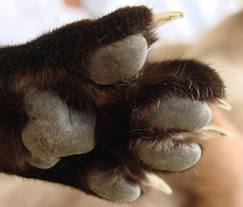 I do clip all of my pets nails myself, so I guess I’m lucky to have pretty good pets, but it’s also a lot of patience and practice! My vet cannot even clip my one cat’s nails, the infamous Leo. He is already so nervous when going to the vet, so he is on high alert, and then after being poked and prodded he is NOT in a good mood. I guess he is a moody cat to begin with anyway, so you can imagine! But I did learn to clip his nails at home, where is he stress-free and more relaxed.
I do clip all of my pets nails myself, so I guess I’m lucky to have pretty good pets, but it’s also a lot of patience and practice! My vet cannot even clip my one cat’s nails, the infamous Leo. He is already so nervous when going to the vet, so he is on high alert, and then after being poked and prodded he is NOT in a good mood. I guess he is a moody cat to begin with anyway, so you can imagine! But I did learn to clip his nails at home, where is he stress-free and more relaxed.
Here are some pointers!
1) Having extra hands is always easier, so if you can have someone help you, the faster the process will be.
2) When your cat is relaxed is the best time, so maybe clip them after a meal. And clip them in a quiet room with no other pets around.
3) First make friends with the paws. Take your cat’s paws between your finger, and press so the nail extends out, then release and give her a treat. Do this once a day, one nail a day, until you’ve done it with all 10.
4) Never cut to the quick. The pink part of the cat’s nail, called the quick, is where the nerves and blood vessels are. Do NOT cut this sensitive area. I always err with caution and cut less, instead of getting really close to the quick; cutting the quick is very painful for your cat. If you do cut it by accident, you can stop the bleeding with a styptic powder or stick.

5) When its time to clip, lay your cat in your lap facing away from you (or if you have someone helping you, in their lap). Take one of her toes in your hand, massage and press the pad until the nail extends. Check to see how much of a trim her nails need and notice where the quick begins. Now trim only the sharp tip of one nail, release your cat’s toe and quickly give her a treat. If your cat didn’t notice, clip another nail, but don’t trim more than two claws in one sitting until your cat is comfortable. Be sure to reward her with a special treat afterward. Please note, you may want to do just one paw at a time for the first couple of sessions.
6) Every two weeks is a good schedule for nail clipping.
7) If you are nervous, or it’s hard to tell where your cat’s quicks are on her nails, you can ask your vet or groomer for help.
What not to do!
1) If your cat resists, don’t raise your voice or punish her.
2) Never attempt to clip when your cat is already agitated.
3) Don’t rush the clipping.
4) Don’t try to trim all your cat’s nails at once in the beginning. I still never clip Leo’s nails all at once, its too stressful for him, but Mya I can because she is much more laid back.
5) If you can help it, I would not declaw your cat. It involves amputation and is really painful.
Good luck!
Tip for Tuesday (or maybe Wednesday :) ) BAD BREATH!
Dental issues are a big item in pets, especially seniors. When you go to check on your pet, sniff the ears and check out the mouth. Look for any sign of bleeding gums, tartar buildup or bad breath. If you can’t see a pet’s back teeth because they just look like a big brown row, that’s an indication of massive tartar buildup. It is no longer acceptable to just chalk it up to “Old Age.” Also remember that any time a pet has bad breath or bleeding gums from a tartar buildup, that pet is swallowing all of the bacteria and germs into their organs, and any type of gingivitis or oral infection can take a toll on a pet’s internal organs.
There have been many advances in anesthesia so that pets can have their teeth cleaned no matter what age. Did you know that one of the most common diseases in dogs and cats is periodontal disease?!
So smell your pet’s breath today, and schedule a check up to see if he or she needs a cleaning!
Help! My Cat is like Jekyll and Hyde!
Help! Why is my cat biting and scratching me for no reason!
As a cat owner myself, I know how frustrating it is when all you want to do is love and cuddle your cat(s), but sometimes they just want to bite you back! Don’t take it too personal; it’s probably not you! Read these reasons for why your cat might be aggressive, and some tips for dealing with it (from the Humane Society).
PLAY AGGRESSION
Cats love to play, and stalk prey. They pounce and attack! As kittens it might be cute, because their teeth and claws are still tiny, but when they are adults, it becomes a nuisance, and can be a hazard if you have young children around. My advice is to NEVER play with your cats with just your hands, meaning don’t use your hands as pretend “prey;” always use a toy so you aren’t teaching them that attacking your hands is OK. A great toy is a long fishing pole type with a toy at the end, so you can keep your distance. If your cat happens to bite or scratch you, say “UH-UH” and immediately stop playing. Never yell or hit your cat.
PETTING AGGRESSION
Sometimes when you are innocently and lovingly petting your cat, he might take a nip at you out of the blue. Experts aren’t really sure of the reasons why, but most think it’s because some cats are sensitive on certain areas of their bodies, or just have a limited tolerance for being touched. My cats only want to be pet on their own terms! I would stay away from touching their tails, ears and paws. When they start twitching, moving their tail, turning back their ears, grumbling, or even putting their teeth lightly on your skin, etc, walk away. Going forward, I would stop petting them before you notice any of these signs. Another thing you can do is reward your cat with treats. Pet him for a little while, then treat him. He will soon associate petting with food- yum!
REDIRECTED AGGRESSION
This occurs when a cat is aroused (in a bad way) by an animal or person, but has no outlet for his naturally aggressive feelings. Maybe your cat is gazing out of the window and sees another cat or animal outside, and he then gets territorial. Since he cannot get to that cat, he attacks the first thing that crosses his path. What you should do is observe your cat- is he staring intently out the window that he doesn’t notice you, is he not responding when you call, or is he growling or hissing- then don’t mess with him! Clap your hands loudly to break his fixation, or just walk away. If you ever have to break up two cats fighting, just use a squirt bottle filled with water.
TERRITORIAL AGGRESSION
Cats are naturally very territorial. Most of the time they are only territorial with other cats, but sometimes you will meet an extremely dominate cat who thinks he owns the house (like my cat LEO!)! Some very aggressive cats can prevent you from entering or leaving a room even. We had a cat client once, who has since moved, that was extremely dominant. Every sitter I introduced him too, was terrified of him, and most would refuse to watch this cat. I had to fill in on multiple occasions because I am not afraid of cats myself, but I definitely understood their fears! If you live with an alpha cat, you can use the squirt bottle to assert your dominance to let him know who is the boss. I would also redirect a territorial cat’s aggression to a plat toy, preferably one with a long pole, so you don’t have to get too close.
OTHER REASONS
If your cat’s behavior has suddenly changed, there could be a potential medical issue. Take him to the vet for a check up. If he is fine, then he might just need behavior modification. Maybe he is just stressed out at home (too much noise, too many people or other pets around). Consider confining him to one room, that is quiet and less stressful and see if this works. You can also always contact an animal behaviorist.
GOOD LUCK!
16 Top Household Hazards for Cats
I know as a cat owner you think you have thought of it all, but it’s better to be safe than sorry!
(1) Human medications. Never leave pills on the counter because I have seen/heard of cats eating them, despite the fact that they are NOT tasty!
(2) Insecticides. One of the most common incidents, involved the misuse of flea and tick medication such as applying the wrong ones to the wrong animals.
(3) People Food. Keep your cats away from grapes, raisins, chocolate, xylitol, avocado, gum…
(4) Plants. Click here to get a complete list.
(5) Pet Medications. Make sure they are properly dispensed.
(6) Rodenticides. Don’t use them in your homes – cats can get into most tight places.
(7) Household Cleaners.
(8) Heavy Metal Paint Chips.
(9) Garden Products. Watch out for cocoa mulch and fertilizer.
(10) Chemical Hazards. Watch out for anti-freeze, pool chemicals, paint thinners & drain cleaners.
(11) Thread, Dental Floss, Tinsel. Cats love string so watch out!
(12) Mini Blinds. Cats/kittens can easily hand themselves if they get caught in the cords!
(13) Treated Toilet Water. I have stopped using the toilet bowl tabs that clean your toilet automatically because even cats sometimes drink out of toilet bowls; they are very agile!
(14) Rubber Bands.
(15) Plastic Bags.
(16) Windows/Screens. An open window can pose a threat to a cat, even if it has a screen on it. I would’t open your windows too far. Screens can break!
How Much Water Does Your Pet Need?
Most household pets do NOT drink enough water!! This can cause health problems. But do you know why your pets might not be drinking enough water?
On the average, a dog should drink 1/2 to 1 ounce of water per pound of body weight each day; whereas cats require 2-4 ounces of water daily.
Water is essential for all life; without water, organs do not function properly. Having a constant supply of fresh water is crucial to your pet’s health. Water is the most important nutrient in your pet’s body, besides oxygen. Many pet owners think their pet is getting enough water because they leave a bowl of water for them, but they can be mistaken.
Follow these suggestions to increase your pet’s water intake, and make sure your pet stays hydrated:
1) Clean and disinfect your pet’s water bowl at least once a day.
2) It is best to change the water in your pet’s bowl three times a day, but at the very least, once a day. The fresher the water, the more appealing it is to your pet to drink!
3) Pets prefer cool water over warm water.
4) Wet food can provide another source of water to your pet. If you are just feeding your pet dry food, they will require more water. On the average, dry food has 10% water content, and wet food has 80% water content!
5) A pet fountain is a great way to help your pet drink more. It circulates the water, keeping it cool and cleans out impurities as well.
6) If you are exercising your pet, he will require more water, so don’t forget to bring some water along for the ride!
7) In the summertime, your pet will require more water.
To check your pet’s hydration level, pick up a loose piece of skin by the shoulder blades, and release it. If it falls back into place quickly, then your pet should be hydrated. If not, this can be a sign that your pet is dehydrated. In any case, if you are worried about dehydration, always contact your vet!
The Overweight Cat
Stop denying your cat is not overweight! Chances are that he or she probably is….and if you have 2 cats, the chances are even greater that at least 1 of them is overweight!
Obesity is a common problem in pets, even in cats! I myself have 2 cats, one might be considered a little overweight, so I need to start paying closer attention to these pointers as well!
I think we tend to forget or not think about our pet’s health in the same way we think about our own. Being overweight has the same effects on pets that it does on people- it can cause stress on the body, and increase their risk of diabetes, liver problems and joint pains.
Things to keep in mind!
(1) It is much easier to keep your pet from gaining weight, then to try to get your pet to loose weight.
(2) To test if your pet is overweight, see if you can feel the backbone and palpate the ribs. If you cannot feel your pet’s ribs without pressing, there is too much fat. In addition, you should see a noticeable “waist” between the back of the rib cage and the hips when looking at your pet from above.
(3) Talk to your vet to determine your pet’s caloric requirements, selet a suitable food and calculate how much to feed.
(4) Increase physical activity of your pet- more play sessions!
(5) Find the hidden calories- are you giving your pet too many treats? They count too!
(6) If you get that guilty feeling when your pet looks at you for food/treats, then you are probably doing what I do, and give in, and give them what they want! If this is the case maybe you should feed your pet several small meals throughout the day, instead of 1 larger meal.
(7) Don’t leave food down all day for grazing.
(8) Provide non-food related attention. If your pet comes up to you and demands food like mine does, instead of food, get out their favorite toy and have a play session. Or you can even try to teach your pet a new trick! Yes, even cats can learn, I’v done it!
One of Most Common Dog Dangers

One of the most common dog dangers that people don’t think about, that probably almost everyone has in their house is….. XYLITOL.
What is xylitol? Xylitol is a type of artificial sweetener found in many sugar-free chewing gums, candies and baked goods. In dogs, it can cause a sudden drop in blood sugar. They symptoms of this dangerous condition include depression, lethargy, weakness, incoordination and seizures in some cases.
Xylitol poisoning can occur in as little as 30 minutes after ingestion. Thats a big problem when you consider that dogs are so darn good about getting into things, and can do it before we even notice them. Also another problem is, sometimes when dogs get into things, they clean up (eat) the evidence too, i.e. the wrappers!
These kinds of things do happen, so please be careful. It is safest not to give your dog any human foods. But I do give my pup carrots and the occasional peanut butter in his kong 🙂
Adopting A Kitten? 10 Reasons Why 2 Are Better Than 1!
1) The most obvious reason is that you are saving 2 lives, instead of just 1!
2) If you have an older already established cat, if you get 2 kittens, they they will most likely play together instead of harassing the older cat.
3) You may experience less behavior problems with 2 kittens. Behavior problems often stem from boredom.
4) Seeing 2 kittens curled up together for a nap is the cutest thing ever!
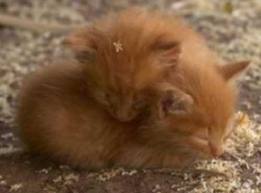
5) 2 kittens will more likely not get in as much mischief during the day because they are not lonely and have each other to play with.
6) Kittens learn by copying, so if one picks up a habit fast, like using the litter box, the other one will copy. Also they help groom each other, which is another cute sight!
7) If 1 kitten is finicky about food, usually seeing the other eat will help him get over his pickiness.
8) It is so much fun to watch 2 kittens play with each other!
9) They help each other burn off energy!
10) 2 kittens who grow up together will most likely be lifelong friends, and why would you not want that for your furry friend? They will each have a friend for life!
I have 2 kitties, Leo and Mya, and I got them when they were 12 weeks old, only a couple weeks apart. Never again, would I get just 1 kitten. They love each other!
Here they are as kittens wrestling!
What to Feed Your Cat???
Following my blog post last week about what to feed your dog, this week we will talk about your cute feline friend!
Similar to a dog’s diet, ingredients matter too for cats!!
INGREDIENTS ARE KEY
Feeding your cat proper nutritious food is one of the most important things you can do as a cat owner. Think beyond the grocery store cat food. Some good brands to buy are: Wellness, Weruva, Best Feline Friend, Natural Balance, Innova, Nature’s Variety, Orijen, & California Natural. These are just some examples of high quality food. If you are feeding your cat a brand that is not listed, just take a look at the ingredient list. Ingredients that should be high on the list are: some sort of protein (meat, fish, poultry, not just “meat product”), Taurine, vitamins, minerals, fatty acids, enzymes and water. Fillers such as corn, rice and wheat should be limited. Ingredients to avoid are: by-products, bone meal, added sugars, BHA, BHT, corn meal and excessive carbohydrate fillers.
WATCH OUT!
Avoid giving your kitty the following:
(1) Canned tuna too often can lead to malnutrition
(2) Milk
(3) Alcohol
(4) Raw eggs
(5) Yeast dough
(6) Onions, garlic
(7) Grapes/Raisins
(8) Chocolate
(9) Coffee/Tea
(10) Candy or gum
VARIETY IS IMPORTANT
Add variety to your cat’s diet. I would feed a combination of wet and dry food. Wet food is important because the water content is high and a lot of cats don’t drink water regularly so this added source of hydration is great. Also, alternating food choices may provide your cat with a more balanced diet.
AGE DOES MATTER
Also, make sure your cat is getting the proper food for his or her age, either kitten, adult or senior food. I would buy food for your kitten that is specifically labeled for “kittens.” However, make sure once your cat reaches adulthood to change food types (read the directions on the bag of food). A lot of adult cats, especially overweight cats should be on weight control food because they are not as active anymore. In addition, senior cats are usually more sedentary and should be on low fat diets, or on foods labeled specifically for seniors.
CAN I FEED MY CAT DOG FOOD? cat2 
Keeping your cat away from your dog’s food is a good idea. Cats need a lot more protein in their diet, so feeding your cat strictly dog food will create a nutritional deficiency.
And of course, none of the advice we give, trumps the advice from your vet, about your pet’s specific diet! We advise everyone to talk to their vet about their pet’s nutritional needs. 🙂
Tip for Tuesday 1/29/13: A Great Way to Help Relieve Anxiety in Your Pet
We have heard of a lot of different ways to try to relieve and ease pets’ stress in certain situations, such as leaving the TV or radio on when you are not home, or during thunder storms etc. However, we would not suggest just leaving the TV on or a random music station on the radio. Reason being that when commercials come on or maybe a show with violence or loud noises, this can create more anxiety in your pet.
Studies have shown that all music and noise is not the same in regards to their affect on animals. In studies, dogs and cats seem to show lower levels of stress when exposed to classical music. Cats might relax in front of the speakers when classical music is playing, and many dogs will actually bark less- especially when listening to the music of Bach. So next time you leave your home, or there is a loud thunderstorm and your pet is stressing, put on some classical music, but make sure the music has a soothing dynamic sound from start to finish, and that it transitions calmly between pieces to be the most effective.
Winterize Your Pets!
WINTERIZE YOUR PET!
Snow tires? Check! Storm windows? Check! Winter coat? Check! But what about your pets, are they ready for the cold winter months? Here are a few things you can do to keep your pet warm, healthy and safe all season long!
WARM HIM UP!
You might laugh when you see a Chihuahua wearing a miniature coat, but there are practical justifications for a coat that keeps your animal warm, especially for small dogs. Small breeds have a high ratio of body surface to body weight, so they lose body heat more quickly than larger dogs. However, larger dogs too can benefit from an extra layer if they spend a lot of time outdoors in the winter, especially if their coat is not too thick.
KEEP HIM DRY.
As much as you hate getting caught in a rainstorm, getting soaked can actually be worse for pets. Their coats retain water, so the impact of the cold and dampness is greater, increasing their risk of hypothermia. Protect your pet with a rain coat!
SOOTHE HIS SKIN
If your pet’s skin becomes red or itchy from the cold, some vets recommend washing the area with a gentle soap and applying a triple antibiotic ointment. For a cracked nose, try a healing balm formulated for pets or A&D ointment, which you can buy at the drug store, that was recommend by my vet.
IMPROVE HIS VISIBILITY
Reflective gear is a safety essential for walks at night or in snowy, rainy or foggy weather- it helps drivers spot your animal if he bounds into traffic. You can also get a winter coat that has reflective strips on it. Reflective gear is even great for cats! If your pet, cat or dog, sneaks out the front door, a reflective collar will alert drivers to his presence, and also help you better find him! Make sure with cats, the collar is a break-away collar.
PROTECT HIS PAWS
When you tug on your snow boots, do the same for your pup if it’s icy out. Pets can suffer frostbite, and the salt or chemicals commonly spread on streets to melt snow can irritate your dog’s paws.
Are You Keeping Your Pet Healthy!!??
Many people don’t realize how important it is for your pet to get plenty of clean, fresh water. Studies have shown that getting your pet to drink more water is one of the easiest ways to maintain good health. However, many animals, do not drink enough water.
Do you ever notice your cat likes to drink from the faucet, or your dog likes to drink out of the toilet bowl? There is a reason behind this strange behavior!
In nature, moving water is cleaner. It has less bacteria than stagnant water. In addition, moving water is more aerated, so it tastes better, and makes the water more appealing to drink. Running water also is naturally filtered. So for these reasons, pets may seek running water or water that is constantly refreshed (like the toilet bowl) over water sitting in a bowl.
My cats LOVE drinking out of my bathtub. So I leave the water on a trickle for them multiple times a day. I have also heard that cats like when their water source is separate from their food source, so you can try moving their water bowl, or leaving another bowl of water out for them in a different place. Other people love water fountains for their cats and/or dogs. I am personally not a fan. I have tried many, and I always end up returning them. But to each their own!
For my dog, I just use a water bowl, and refresh it multiple times a day. Also make sure you actually wash and scrub out your pet’s water bowls with soap once a day. People frequently tend to forget to do this. Even water bowls can get bacteria growth.
Whatever you choose, just make sure your pet has access to clean, fresh water, and he or she will be healthier!
Looking for a Kitten or Cat to Join your Family?! (Part 3)
Continuing from our Blog post from last Thursday (Part 2), this is the final part of our cat adoption series. There are so many cats at shelters and rescues that need forever homes, so if you are looking to add a feline to your pack, please think about adoption first. Even if you want a purebred cat, or a certain color cat, adoption is still an option!
Meet Connor!
Connor is a polydactyl cat. Polydactyl cats can come in any breed. Commonly known as hyperdactyly, polydactylism is a genetic mutation that causes a cat to have more than the normal number of toes. In fact, a cat with polydactylism can easily have up to 35 toes! For the most part, being a polydactyl cat doesn’t affect a cat negatively at all. In fact, they can sometimes use their extra toes as thumbs, making it easy for them to open latches with one paw!
Connor is a gorgeous orange and white kitten! He and his siblings were taken off the streets at about eight weeks of age, and they now act like they’ve always been with people. Connor and two of his siblings have polydactyl traits and are as cute as buttons. Once you meet Connor, you’ll know he’s an angel in disguise because of his sweet purr and kind soul.
Find a polydactyl cat/kitten Near You Now at Adopt-a-Pet.com!
http://www.adoptapet.com/s/polydactyl-cats-for-adoption
Looking for a Kitten or Cat to Join your Family?! (Part 1)
As some of you may know I have 2 Ragdoll cats, Mya and Leo. They are wonderful cats! They have a loving nature, and as their name suggests, they have a tendency to go limp when picked up (not all of them do though believe it or not!) They tend to be on the bigger size, with the males averaging around 15 pounds. Leo, my male is about 12/13 pounds, while my female Mya is a lot smaller, around 8 or 9 pounds. Before them, I had a crazy Calico named Kali, who I adopted from the Brooklyn AC&C, who had a dual personality, but loved her just the same! And before her, I had a DSH cat named Penny, who was found on the street, but the sweetest cat you would ever meet. And of course, I can’t forget my little sunshine, Valentino, my rescue pup from Louie’s Legacy (www.louieslegacy.org), who just turned 2, and who gets tormented by my cat Leo! 🙂
Even though a majority of my animals have been rescued, I am ashamed to admit that my Ragdolls were purchased from a breeder in upstate NY. I researched the breed, and really wanted to have that particular breed. I didn’t know at the time (about 5-6 years ago) that I could find a purebred or a close mix from a shelter or rescue agency. I definitely would have adopted if I had known this fact. I wanted to share this with my readers because its so important to support your local shelters, and help homeless animals find a forever home.
Below, meet one kind of the adoptable “purebred” cats. These stories were provide by Adopt-A-Pet. On Adopt-A-Pet’s website, you can search for your next feline family member by breed, gender, color, coat length, age and more.
Persians Cats – Fluffy
Persians are known for their round faces and short, stubby muzzles. They always have long and thick coats, short little legs, and a wide head. The breed’s fur is so long and dense, actually, that they have to have a groomer take professional care of it every six to eight weeks! Persians are usually quiet, laid-back, and lazy – they do great in apartment environments.
If you’re looking for a fluffy, flat-faced Persian to bring home for a companion, check out this lovely kitty!
This is Fluffy, named because she’s just so fluffy! Fluffy is a tortoiseshell kitty that loves to snuggle when you come home from a long day at work. She is declawed in the front, but she will still try to knead you to show how much she loves you. Even though she is almost an old lady at nine years of age, you’d never know it – she’s playful, loves children, and adores her best friend Charlie.
Find a Persian cat/kitten Near You Now at Adopt-a-Pet.com http://www.adoptapet.com/s/persian-cats-for-adoption
Look out for tomorrows post for more cats!
Also, speaking of searching particular colors, breeds etc., check out this orange kitty from Louie’s Legacy Animal Rescue that needs a home! I know some people have a thing for orange cats- like my business partner Nicole!
http://www.petfinder.com/petdetail/22649835
See you tomorrow!
10 MOST IMPORTANT THINGS TO DO WITH YOUR KITTEN
1. Socialize your kitten. A cat’s personality is a unique blend of inherited traits and early experience. Make sure he gets plenty of contact with people and a stimulating home environment.
2. Train your kitten. It builds a strong relationship between the two of you. Some cats are more trainable that others, but all are capable of learning such behaviors as sit and come, and using a scratch post.
3. Set limits. This means rewarding him when you see him doing things you like- such as scratching on his post, and re-directing him when he does things you don’t like.
4. Kitten-proof your home. Look up, look down and all around to find all the things they could conceivably get into or get hurt by.
5. Play with your kitten. Don’t underestimate your cat’s need for interactive play and exercise.
6. Teach your kitten not to use his teeth and claws on people. Find an acceptable substitute like a laser pointer, feather toy etc. Don’t let people play with your kitten with their hands, so the kitten thinks your hand is a toy, i.e. allowed to bite or use his claws.
7. Leave your kitten’s claws alone unless you have no other choice. Declawing involves removing some of the bones of the toes as well as the claws. If you give your cat plenty of things to claw at and play with, you shouldn’t have a problem!
8. Put collars and tags on, and microchip your kitten too. If you use a collar, make sure it is a breakaway collar. So many pets get lost every year, and no one ever thinks it will happen to them!
9. Alter your kitten. Spaying and neutering improves a kitten’s chances for good health.
10. Buy pet health insurance. Many pets lives have been saved thanks to pet health insurance.
Risky Mistakes Pet Owners Make – PART 1
(1) Letting your dog walk you. A poorly trained dog can pull you over while you’re out for a stroll. According to the CDC, tens of thousands of people end up in the ER every year because of pet related issues falls. Many of these falls occur during walks. Experts say to obedience train your dogs. It helps in every aspect!
(2) Overlooking ticks. After a walk in the woods, you check yourself for ticks, so you should also check Fido! Tick bites put your dog at risk for many diseases.
(3) Ignoring ringworm. If your pet has a round bald patch, ringworm could be to blame. Leave this fungus untreated and you’re putting your family at risk. Please can get it from touching. Ringworm causes a reddish, ring-shaped rash on the skin or bald spots if it infects the scalp.
(4) Not spaying or neutering your pet. Millions of cats and dogs live on the street or end up euthanized because of unwanted litters. Spaying or neutering is the healthy choice- it reduces the risk of breast cancer and testicular cancer.
(5) Keeping the bowl full. With the best intentions, some people keep their pets’ food bowls full at all times. This is one of the most common mistakes pet owners make. The problem is that cats and dogs often eat more than they need. If food is constantly available, they will take in too many calories and put on too much weight. To avoid this, follow the suggestions on the pet food label or ask your vet.
(6) Forcing cats to be vegetarians. Vegetarian people sometimes want their pets to share their lifestyle. The trouble is cats are obligate carnivores. This means they must eat meat to survive. They depend on nutrients, such as the amino acid taurine, that are only found in animal tissue. Dogs maybe be able to handle a well-balanced vegetarian diet, but check with your vet first.
(7) Providing too little exercise. Just like people, pets need exercise to stay healthy. Couch potato pets are prone to obesity, which raises their risk of respiratory problems and joint problems. The right amount of exercise for a dog depends on the breed, size and age- ask your vet!
(8) Misreading body language. Do you understand your dog? If you think a wagging tail is always a good sign, you could be in for a nasty surprise. When a dog wants to threaten someone, he may hold his tail high and waive it stiffly back and forth. Mistake this warning for a sign of playfulness and you could get bitten. Learn your pets body language!
(9) Feeding cats only dry food. Cats have a low thirst drive by nature, so they may not drink enough to stay well hydrated. Feeding them only dry food compounds the problem and can put them at risk for urinary tract disorders. To promote healthy bladder, some vets recommend canned foods, which are 78 percent water. A fluid rich diet is particularly important for cats with a history of urinary tract infections.
(10) Giving Bones to dogs. We may think of bones as a wonderful treat for dogs, but the FDA paints a different picture. The agency warns that chewing on bones can injure the teeth, tongue or mouth. Bon fragments can get stuck in your dog’s windpipe, interfering with breathing. Bones can also get stuck in the digestive tract, where they will have to be removed with surgery. If your dog likes to chew, ask your et about safe alternatives.
From WEBMD.
Pets and Cataracts
|
You might be familiar with cataracts as an eye problem that affects many older adults. One thing that many people don’t know, however, is that cataracts aren’t exclusive to humans. Did you know dogs and cats are susceptible to cataracts too? Read this article which provides general information about dogs and cataracts, and also explains how cataracts affect your dog and what you can do to treat them. Go to: http://www.petplace.com/dogs/cataracts-in-dogs/page1.aspx.
This article talks about cats and cataracts. Go to http://www.petplace.com/cats/cataracts-in-cats/page1.aspx. One important thing to consider is that heredity is not the only factor for cataracts, so even if your pet’s history is cataract-free they could still be at risk. Any sort of eye trauma can lead to cataracts, so it is always important to see a vet if your dog or cat has an injury to his or her eyes.
|
TIP FOR TUESDAY 6/19/12: There’s the Spot!
When our furry feline friends flip over to show us their adorable bellies, many of us make the assumption that they’re looking for a tickle or a rub…and end up with scratch or bite wounds as a result!
While there are some cats who do enjoy a friendly belly rub, there are probably at least as many who are rolling over in an effort to communicate that they’re not interested in affection at all. A cat may be rolling over to show you the weapons he has at the ends of those velvety paws. And he may follow up with his teeth if you don’t heed his initial warning.
Next time you’re thinking you have a belly-rub inclined kitty on your hands, look first at the other body language the kitty might be sharing–such as a swishing tail, pinned-back ears, dilated (round) pupils, whiskers pulled back or extending forward. These can all be signs that this particular kitty isn’t in the mood for attention at the moment. He may be trying to tell you he is feeling overly excited/stimulated, fearful or aggressive.
If a cat is trying to tell you to back off, simply remove yourself and find another way to show your affection. Try giving the kitty some quiet time to calm down, provide him with an appropriate wand toy to chase, or give him a bit more time to acclimate.
Tip from ASPCA.
NEW SEAT BELT LAW FOR PETS!!
New Jersey is now the only state in the country where driving with pets loose in the car is a violation of animal cruelty law. Drivers who do not secure their pet can face a ticket of $250 to $1,000 and up to six months in jail. Additionally, allowing your pets to hang his head out the window, having him riding in the back of a truck curling up on the driver’s lap are also ticket-able offenses under the law.
Dogs can be placed in harnesses that click right into the seat belt buckle. Cats don’t take well to harnesses for the most part, so they need to go in a carrier. And the carrier needs to be buckled down.
Motor Vehicle Commission (MVC) Chairman and Chief Administrator Raymond P. Martinez and Superintendent of the NJ Society for the Prevention of Cruelty to Animals (NJSPCA) Col. Frank Rizzo delivered the “Buckle Up Your Pet” safety message prior to the official start of summer because more people take to the roads with their pets in the warmer weather months.
“You wouldn’t put your child in the car unrestrained so you shouldn’t put your pet in the car unrestrained either,” said Col. Rizzo. “What people come to realize only too late is that animals act like flying missiles in an impact and can not only hurt themselves but hurt their human family members too.”
While pets can be a danger in the car, they are also a hazard if they’re not buckled up because an unrestrained pet in an accident can delay emergency workers from acting and can even run away, which could cause another accident. In addition, you need to make sure your pets are safe, in case of a fender bender or any other accident!
During the summer months, the NJSPCA Officers will be checking for vehicles traveling to and from the shore areas with dogs hanging their heads out of windows or unleashed dogs traveling in the open back of pick-up trucks.
So, even if you are passing through the Garden State and your pets are not restrained, the po po might git ya! Watch out!
I have always restrained my pup and kitties in the car. My dog wears a doggie seat belt, and the cats go in the carrier, and then the carrier is belted in. I don’t trust drivers out there, and I want my babies to be safe! I agree with this LAW!!
What do you think about the new seat belt laws regarding dogs in New Jersey? Share in a comment.
‘TIS THE SEASON OF TICKS!
SIGNS OF A TICK BITE
- Scratching, licking or chewing at the bite.
- Redness or rash starting at the bite location.
- Voice change to a croaky husky bark.
- Paralysis around the bite site, which may progress to other parts of the body.
- Disease symptoms, including muscle aches, stiffness, weakness, fever and swollen lymph nodes.
ACTIONS FOR SURVIVAL
- Using latex gloves, firmly hold the body as close to the head with your fingers or tweezers. Then with firm gentle pressure, slowly pull the tick out. Do not twist. If all the parts of the tick are not removed, seek
veterinarian help.
- Clean the area with antibacterial soap.
- Put a dab of antibacterial ointment over the break in the skin.
- Save the tick in a jar or small plastic bag and put the date on it.
Keep the tick for at least 2 weeks so the tick can be tested is any signs present themselves in you or your pets during that time.
- Contact your vet for further assistance, if necessary.
- Do not use heat to try and get the tick out. You may burn yourself and your pet!
VETERINARY CARE
- Antibiotics and basic wound care are necessary.
- Vet care is necessary if any part of the tick is not fully removed.
- Vet care is also necessary if any lack of body function or limb function is observed after finding a tick.
- If you bring the tick in, your vet may have the body analyzed or tested.
April is Prevention of Cruelty to Animals Month
(1) Know who to call to report animal cruelty. The ASPCA in NYC has Humane Law Enforcement Agents who have the power to investigate and arrest perpetrators of animal cruelty in the state of NY. In NYC, call 212-876-7700 etx. 4450. The the state of NJ, call NYSPCA at 800-582-5979
(2) Get to know and look out for the animals in your neighborhood.
(3) Make the call! Most reports come from the public, so please keep your eyes and ears open!
(4) Provide as much information as possible when reporting animal cruelty like who, what, where and the date.
(5) Contact your local law enforcement department and let them know that investigating animal cruelty should be a priority.
(6) Fight for the passage of strong anti-cruelty laws on federal, state and local levels. With stronger laws come tougher penalties. You can join your local society to prevent cruelty to animals. The ASPCA has an Advocacy Brigade (click here), and as a member, you will receive emails asking to write letters encouraging your legislators to pass these laws- and you can send them directly from the website.
(7) Set a good example for others. If you have pets, be sure to always show them the love and good care they deserve. But it’s more than just food, water, and adequate shelter. Be responsible and also have your pet spayed or neutered. And give them lots of hugs!
(8) Talk to your kids about how to treat animals with kindness and respect.
(9) Support your local shelter or animal rescue organization. To find a list of shelters and rescues in your area click here.
(10) Start a neighborhood watch program. Get to know the animals in your neighborhood and invite your friends and neighbors to do the same. Together you can keep an eye out for any suspicious behaviors- abuse and neglect of companion animals, the mistreatment of local wildlife, dogs left in hot cars and other signs of abuse.
TO LEARN WHAT ABUSE LOOKS LIKE, CLICK HERE..
Lifetime Care Planning for Pets
If you find it hard to think about life without your pet, imagine your pet’s life without you! According to the ASPCA, there are hundreds of thousands of pets in the US that are surrendered to animal shelters every year due to the death or disability of their human caregivers. “Orphaned” pets do not adjust well to the shelter experience and they are often labeled as “unadoptable.” Sadly, many healthy, adoptable pets are euthanized simply because their owners did not plan for their continuous care.
To ensure that your pets continue to receive the care they need and deserve, you should plan for the following three things:
(1) Identify committed caregivers who can care for your pets.
(2) Maintain written instructions.
(3) Set up a finance plan or set aside funds for the continued care of your pets.
Back to (1): Identifying a caregiver….
Don’t leave this decision up to strangers; you know your pets the best. If you don’t have anyone to designate as a caregiver, then discuss the situation with your vet, pet sitters and local animal welfare organizations. They may be able to help you find the right people that are capable of caring for your pets should you no longer be able to. You can also consider appointing several individuals, such as vets, family members, pet sitters and friends to an animal care panel, that would be charged with the responsibility of locating a suitable caregiver. That panel can use various mean of locating a proper caregiver such as advertising in a local newspaper and consulting with local animal welfare organizations.
Another option is a lifetime care program or facility, a viable alternative for pet owners who may not have a potential caregiver to leave their pets to. Some questions to ask the facility:
1) How long has the program existed?
2) How is it funded?
3) What happens to the pets if the program is unable to continue?
4) What is the experience of the employees?
5) What is the financial commitment required?
6) What is their capacity for pets?
7) What type of space do the pets have?
8) Do they have references?
9) What level of vet care is provided?
10) Are pets adopted out or do they remain at the facility permanently?
11) What is your policy about returning adopted out pets?
12) What type of food?
13) What kind of exercise?
14) Does the program accept pets regardless of age and medical conditions?
TOP 10 HALLOWEEN SAFETY TIPS FOR YOUR PETS
Attention, animal lovers, it’s almost the spookiest night of the year! The ASPCA recommends taking some common sense precautions this Halloween to keep you and your pet saying “trick or treat!” all the way to November 1.
1. No tricks, no treats: That bowl of candy is for trick-or-treaters, not for Scruffy and Fluffy. Chocolate in all forms—especially dark or baking chocolate—can be very dangerous for dogs and cats. Candies containing the artificial sweetener xylitol can also cause problems. If you do suspect your pet has ingested something toxic, please call your veterinarian or the ASPCA Animal Poison Control Center at (888) 426-4435.
2. Popular Halloween plants such as pumpkins and decorative corn are considered to be relatively nontoxic, but they can produce stomach upset in pets who nibble on them.
3. Wires and cords from electric lights and other decorations should be kept out of reach of your pets. If chewed, your pet might suffer cuts or burns, or receive a possibly life-threatening electrical shock.
4. A carved pumpkin certainly is festive, but do exercise caution if you choose to add a candle. Pets can easily knock a lit pumpkin over and cause a fire. Curious kittens especially run the risk of getting burned or singed by candle flames.
5. Dress-up can be a big mess-up for some pets. Please don’t put your dog or cat in a costume UNLESS you know he or she loves it (yup, a few pets are real hams!). For pets who prefer their “birthday suits,” however, wearing a costume may cause undue stress.
6. If you do dress up your pet, make sure the costume isn’t annoying or unsafe. It should not constrict the animal’s movement or hearing, or impede his ability to breathe, bark or meow. Also, be sure to try on costumes before the big night. If your pet seems distressed, allergic or shows abnormal behavior, consider letting him go au naturale or donning a festive bandana.
7. Take a closer look at your pet’s costume and make sure it does not have small, dangling or easily chewed-off pieces that he could choke on. Also, ill-fitting outfits can get twisted on external objects or your pet, leading to injury.
8. All but the most social dogs and cats should be kept in a separate room away from the front door during peak trick-or-treating hours. Too many strangers can be scary and stressful for pets.
9. When opening the door for trick-or-treaters, take care that your cat or dog doesn’t dart outside.
10. IDs, please! Always make sure your dog or cat has proper identification. If for any reason your pet escapes and becomes lost, a collar and tags and/or a microchip can be a lifesaver, increaing the chances that he or she will be returned to you.
Tips provided by the ASPCA.
ALL ABOUT KEEPING YOUR PET SAFE IN THE SUMMER HEAT!
Hyperthermia is systemic over-heating. Excessive heat is hard on the cells and organs of pets. Panting is a pet’s way to cool themselves; however, the higher the temperature, the less efficient panting becomes for pets (especially for the brachycephalic breeds (short-nosed)).
We have had record heat in our area, so please take all precautions to prevent any heat injuries to your pets!
PREVENTION TIPS
(1) Never leave your pets in the car.
(2) Pay special attention to older and younger pets because they are more susceptible to heat stroke.
(3) If left alone at home, make sure the home is cool. Do not leave your pets in the yard unattended.
(4) Pets need a constant supply of fresh clean cool water.
(5) Exposing your pets to stresses like traveling, strange sights, sounds and smells, and excitement can be a factor in causing your pet to overheat.
(6) To cool off your pet, wet their paws with cool water, or just hose their whole bodies down with cool water.
(7) Shorten your dog’s walks, walk in shaded area, or walk at the cooler times of the day.
SIGNS OF HEAT STROKE
(1) Uncontrollable panting.
(2) Rapid heart rate.
(3) Body Temperatures of 105 degrees and above are extremely dangerous. Normal temperature for cats and dogs is 101.5 to 102.4 degrees.
(4) Mucous Membranes. As the pet’s condition gets worse, the tongue, gums and lips will progressively move to blue/gray and the pet’s mouth will be dry.
(5) Foaming/Salivating.
(6) Lethargy.
(7) Capillary refill- when capillary refill time reaches 5 seconds, this is a sign of heat stroke.
(8) Vomiting.
ACTIONS TO TAKE
(1) Note the time you begin assisting your pet.
(2) Restrain and muzzle if necessary; however, if you muzzle then the pet cannot pant and you are now responsible for cooling the pet’s body down.
(3) Bathe or hose the pet’s body with copious amounts of cool water. Do not use ice or very cold water.
(4) Monitor the body temperature, and stop when it reaches 102 degrees.
(5) Monitor mucous membrane color; unless your pet normally has black gums, pink is the usual.
(6) Prepare to treat for shock, which is the lack of adequate oxygen to the cells of the body.
(7) Do not give them anything to eat or drink unless advised by a veterinarian to do so.
(8) Contact your vet or nearest animal hospital for further assistance.
The information and tips above are provided by PetTech. They offer Pet CPR and First Aid.



